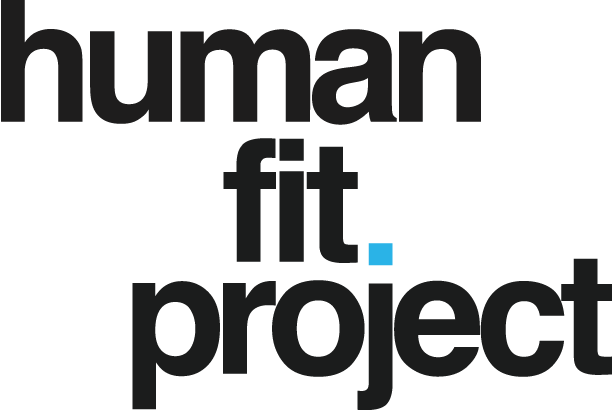Pull-ups are tough, but they’re one of the most important functional strength exercises there are. If you need to pull yourself up out of danger, being able to do pull-ups are going to make the task a whole lot easier. If you’re struggling to do your first pull-up, our 4-week pull-up workout plan will get you banging them out in no time. To learn more about the pull-up and pull up training, check out our piece on how to increase pull-ups from 0 to 10 reps. If you’re ready to jump right into working out, continue reading on.
Want more workout plans? Check out our collection of 35+ free workout plans for different fitness goals and abilities.
Don’t forget to follow us on Instagram, TikTok, Twitter, and Facebook!
Understanding the Muscles & Mechanics of Pull-Ups
Pull-ups are a powerhouse move, engaging a symphony of muscle groups to orchestrate one of the most effective upper body exercises. At the core of this exercise are your back muscles, specifically the latissimus dorsi, or ‘lats.’ These broad muscles on each side of your back are the primary drivers pulling you up towards the bar. But the engagement doesn’t stop there – your biceps and forearms get a serious workout too, as they flex and grip, giving you the pulling power you need. The synergistic work of these muscles not only strengthens your upper body but also enhances your overall pulling abilities.
But let’s not overlook the unsung heroes of the pull-up – the muscle stabilizers. As you hoist your body up, your trapezius, rhomboids, and deltoids (shoulder muscles) kick in, stabilizing your shoulder blades and providing support throughout the movement. Your core muscles, including the rectus abdominis, obliques, and transverse abdominis, also play a crucial role. They engage to keep your body stable and aligned, preventing swinging and ensuring a controlled motion. This full-body engagement makes pull-ups not just an upper body exercise, but a comprehensive workout that builds functional strength and muscle coordination.
How the 4-Week Pull-Up Workout Plan Works
First and foremost, even though this is a program specifically designed to focus on increasing your pull-ups, it’s also well-rounded to build total body functional strength and cardiovascular fitness.
Within the workout plan there are two days dedicated to “pulling” combined with “pushing” so that your body is balanced between the two actions or movement patterns. There is another day dedicated to carries and core which will help support your pull-up goals by increasing core stability and strength and grip strength.
The workout plan also includes a lower body or leg day, a mobility and active recovery day, a HIIT cardio day, and a long cardio day.
The 4-Week Pull-Up Workout Plan Directions
Before starting your pull up training plan, performing either 1 set of as many pull-ups on a standard pull up bar as possible to see what your benchmark is. Another option is to do multiple sets of dead hangs for as long as you can. Then, follow the program as written out below, but try and either increase the amount of reps you do, or the amount of resistance you use for your strength exercises. Once you’ve completed your fourth week, perform the pull-up or dead hang test to see how you’ve improved.
The 4-Week Pull-Up Workout Plan Weekly Schedule
Monday – Pull & Push
Dead Hang 3 sets x as long as possible
Push-up 3 sets x as long as possible
Lat Pull-Down 3 sets x 10 reps
Dumbbell Chest Press 3 sets x 10 reps
Seated Row 3 sets x 10 reps
Dumbbell Flye 3 sets x 10 reps
In week two, add two sets of scapular pull-ups for as many reps as possible after your three sets of dead hangs. In week three, replace your dead hangs with band assisted pull-ups. Simply loop a band around the pull up bar, step into the band, and do your pull-ups. If your gym has an assisted pull-up machine, even better. In week four, replace the band assisted pull-ups with eccentric pull-ups with the assist of a box. What you do is place a high box under the pull-up bar and jump up onto it so you’re at the top of a pull-up, but slowly lower yourself down. Do this for as many reps as possible.
Tuesday – HIIT Cardio
High Knees x 30 seconds
Mountain Climbers x 30 seconds
Squat Thrusts x 30 seconds
Rest 30 seconds. Repeat 5 rounds.
Jumping Lunge x 30 seconds
Butterfly sit-up x 30 seconds
Skaters x 30 seconds
Rest 30 seconds. Repeat 5 rounds.
Wednesday – Active Recovery / Mobility
Perform the following exercises from our Wind Down routine:
Upper back foam roll 3 sets x 30-60 seconds
Scorpions 3 sets x 5 reps
Swimmers 3 sets x 10 – 15 reps
Cobra 3 sets x 10 reps up and down
Thread the needle 3 sets x 5 reps
Child’s pose 3 sets x 30 seconds
Pigeon 3 sets x 30 seconds each side
90 / 90 transitions 3 sets x 5 reps each direction
Seated twist 3 sets x 30 seconds each
Forward fold 3 sets x 30 seconds
Bretzel stretch 3 sets x 30-60 seconds
Happy baby 3 sets x 30 seconds
Thursday – Legs, Carries & Core
Bird dog 3 sets x 10 reps
Goblet squat 3 sets x 10 reps
Bulgarian split squat 3 sets x 10 reps
Box jump 3 sets x 6 – 8 reps
Lunge 3 sets x 10 reps
Farmer carry (very heavy) 3 carries x approx. 30 – 40 yards
Side plank 3 sets x as long as possible
Elbow plank 3 sets x as long as possible
Friday – Pull & Push
Suspension trainer curls 3 sets x as many as possible
Inverted rows 3 sets x as many as possible
Dead hang 3 sets as long as possible
Lat pull-down 3 sets x 10 reps
Dumbbell floor press 3 sets x 10 reps
Dumbbell flye 3 sets x 10 reps
Push-ups 3 sets x as many reps as possible
In week two, add two sets of scapular pull-ups for as many reps as possible after your three sets of dead hangs. In week three, replace your dead hangs with band assisted pull-ups. Simply loop a band around the pull up bar, step into the band, and do your pull-ups. If your gym has an assisted pull-up machine, even better. In week four, replace the band assisted pull-ups with eccentric pull-ups with the assist of a box. What you do is place a high box under the pull-up bar and jump up onto it so you’re at the top of a pull-up, but slowly lower yourself down. Do this for as many reps as possible.
Saturday – Off
Take this day for complete recovery.
Sunday – Long Cardio
Either run, bike, swim, ski, row, collectively for a minimum of 45 minutes as approximately 60% of your max heart rate or “zone 2”.
Don’t forget to follow us on social media: Instagram, Facebook, and Twitter.
Got a question or feedback? Hit up Mike on Instagram, Facebook, and Twitter.
Be first to know about our latest content drops! Sign up for our monthly newsletter.


